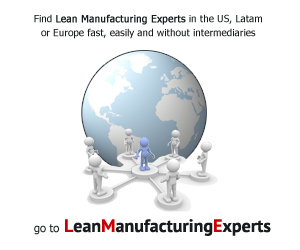Kanban boards convert projects from circus to symphony
Trying to manage a big project with a team can feel like running a circus. It’s hard to tame the tigers and herd the elephants while simultaneously balancing budgets and priorities on the high wire.
It would be better if your team could work in concert, like the musicians in a symphony — but how do you communicate changing priorities and urgent tasks without turning into a ringmaster who directs each person’s every move? You need a score your team can all read at the same time, each playing their part while staying up to date on everyone else’s work and seeing overall priorities.
A Kanban board can do that. Developed from lean manufacturing principles, Kanban (pronounced: con-bon) translates to billboard in Japanese. The Kanban methodology evaluates work priorities, establishes pace for the work and allows assignments to the team — so everyone can be more effective.
Have you used sticky notes to help itemize your thoughts or plan the steps needed for a project? A Kanban board uses this same idea, dividing work into categories, like To-Do (a repository for things that could be done), Doing (often called work-in-progress) and Done. You could create a manual Kanban board with sticky notes and a wall, but you can also use one of the many software tools that incorporate Kanban principles. With an internet connection, your whole team can stay up to speed, no matter where they are.
Benefits of Kanban boards
Because Kanban boards are digital, they are an efficient yet dynamic tool. Tasks and priorities can be moved around easily, and the board shows your whole team the visual scope of the project at a glance.
Kanban boards communicate goals and help your team define what success looks like. Just like the score in a symphony, they keep everyone on the same page, even when members of your team may be working on different tasks. This alignment makes the team leader’s job easier — more like a conductor than a micromanaging taskmaster while also holding the team members accountable for their part.
This flexible project management tool allows the company to rapidly adapt to changing conditions, and it can be used to manage hard targets like metrics and budgets.
Questions Kanban can help you answer
A Kanban board can answer the infamous 5 W’s and the H for everyone who needs to be in the know: Who, what, when, where, why and how.
Why: In any project, it’s easy to lose focus on the end goal. A Kanban board gives the team a central location to refresh themselves on the overarching goal and how subprojects align with that goal.
What: When you break a big project into small, sequential chunks to divide and assign to team members, your Kanban board helps you organize tasks and team members, and it makes it easy to shift responsibilities when things change.
Who: You can assign each task or group of tasks to a person or a team on the Kanban board. Using the board, you can encourage an environment of mutual accountability for all team members, as well as make it easy to keep track of who’s doing what.
When: Keep your project on track when you manage your timeline on the Kanban board, too. You can show sequential phases of a project, and use definite or loose timelines. The whole team sees where any given task is, giving you realistic expectations for progress. Just think of the emails, calls and texts you’ll prevent!
Where: Most Kanban boards allow you to link to or attach project documents, like content, files, agendas and budgets.
How: Use your Kanban board to document a process, show the steps involved or to share approvals and forms with the team.
Lots of project management software now incorporates Kanban principles, and all kinds of organizations and projects use it: nonprofits and charities, marketing, technology, strategic and operational projects and, well, you name it. Check out LeanKit, Projectplace, Trello or Kanbanchi for examples of Kanban apps, and give this great tool the ability to make your team an orchestra to make beautiful music (and money) together!

 News, training, experts opinion, bibliography, software and everything about Lean world.
News, training, experts opinion, bibliography, software and everything about Lean world.
